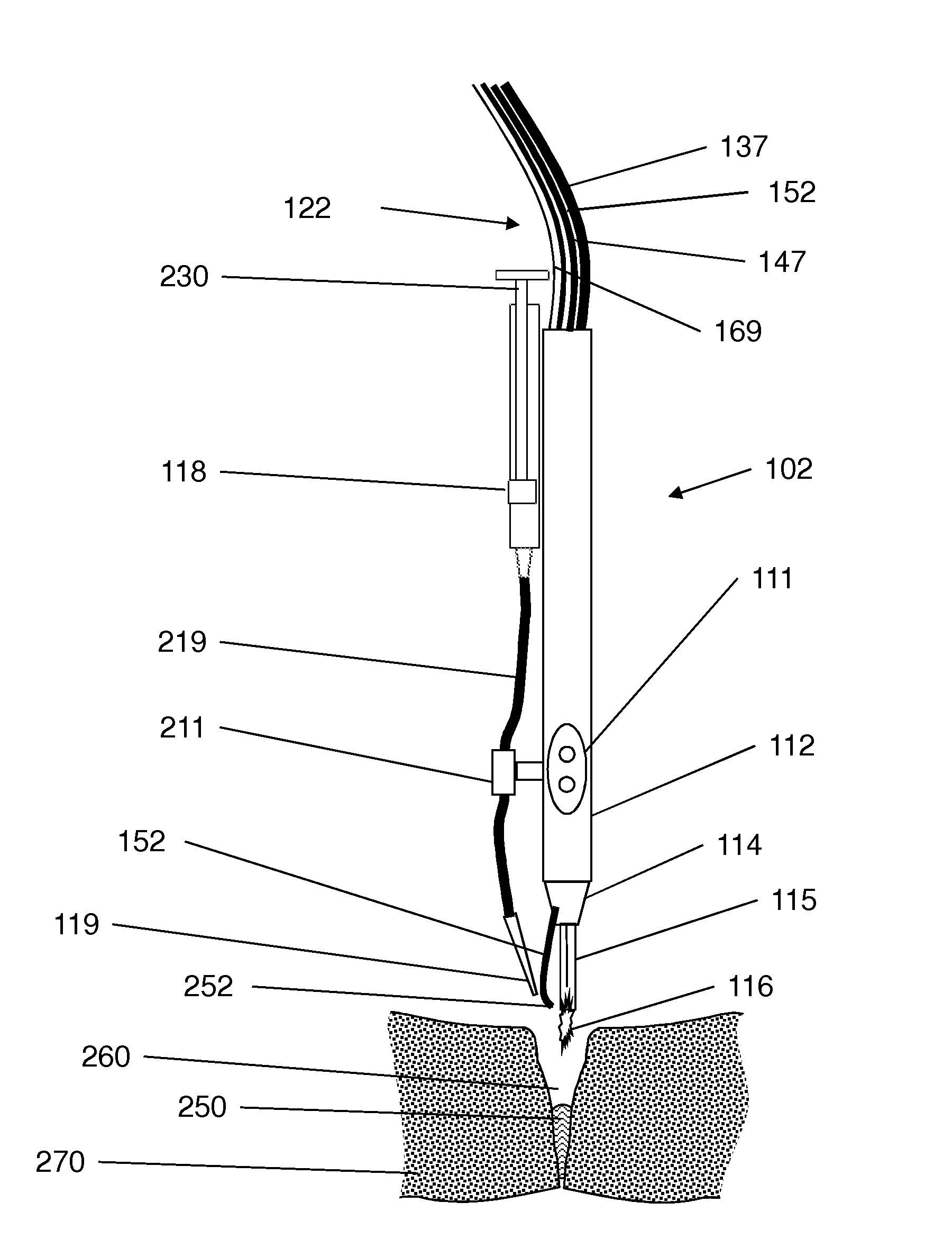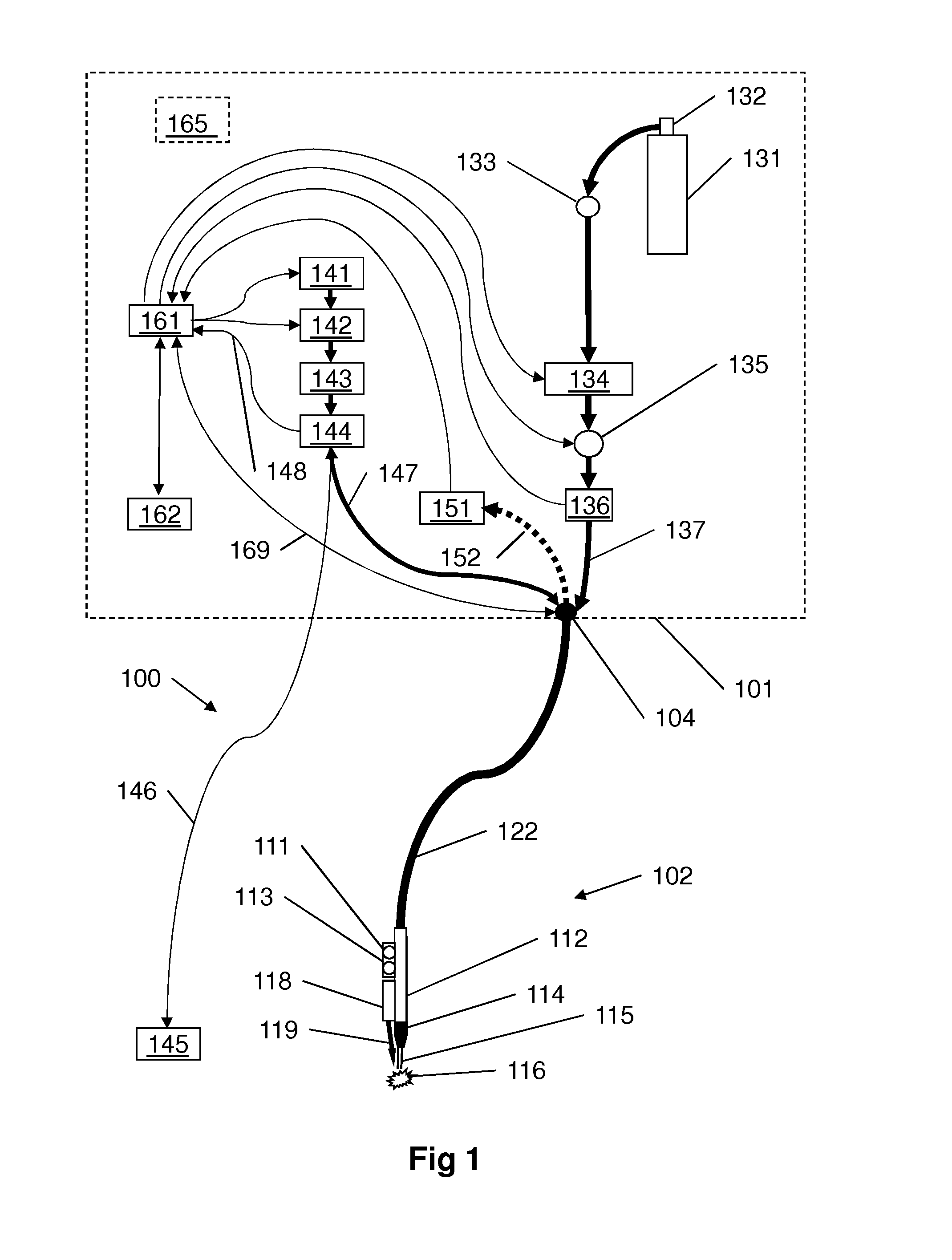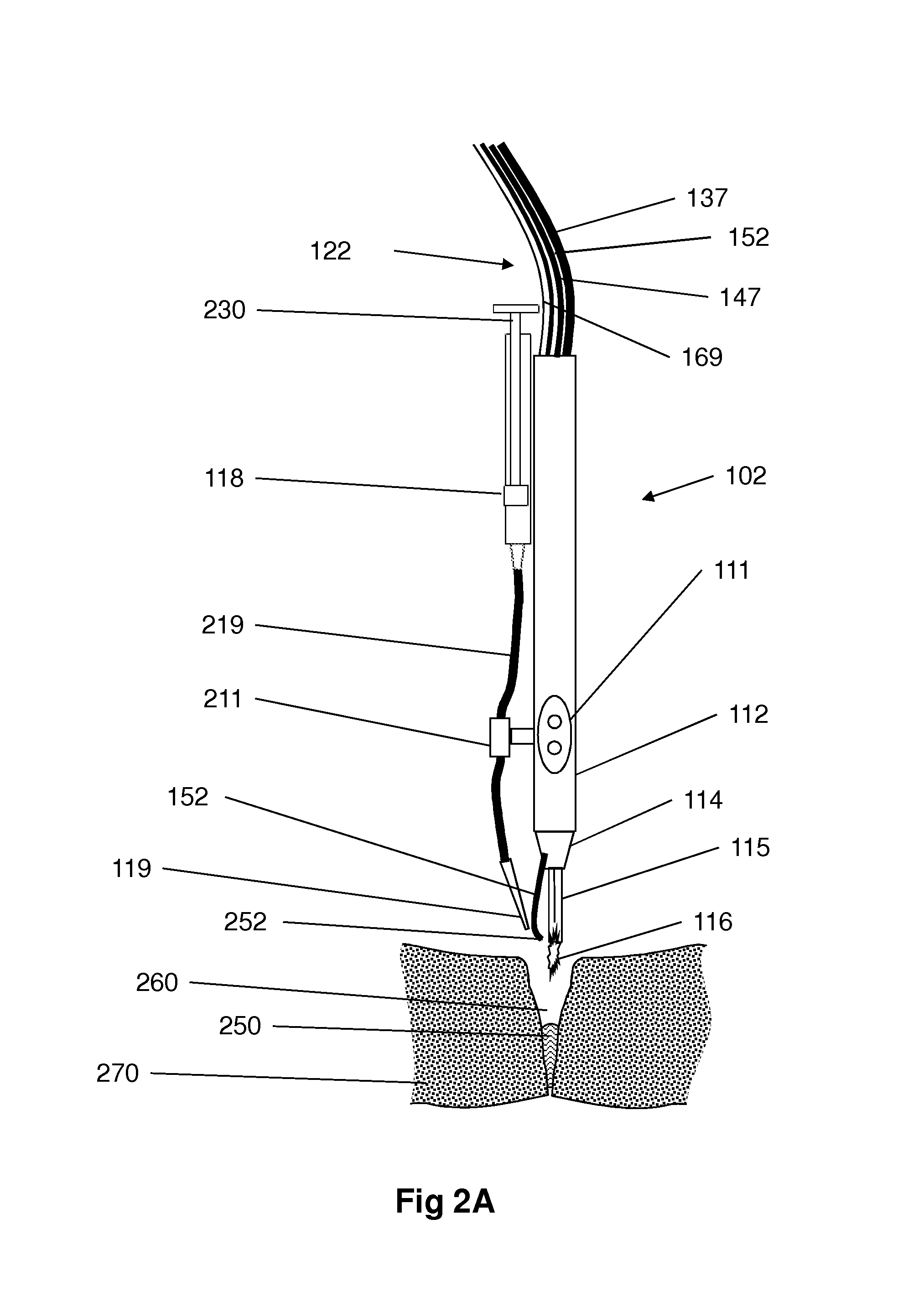Tissue welding using plasma
a tissue welding and plasma technology, applied in the field of apparatus and method of tissue welding using plasma, can solve the problems of limiting the use of plasma welding, burning albumin and tissue in the vicinity, and granulomas that can be painful and difficult to treat, and achieve the effect of enhancing the confinement of changes to the solder
- Summary
- Abstract
- Description
- Claims
- Application Information
AI Technical Summary
Benefits of technology
Problems solved by technology
Method used
Image
Examples
Embodiment Construction
[0102]The present invention relates to an apparatus and method for tissue welding applications using a plasma head.
[0103]Before explaining at least one embodiment of the invention in detail, it is to be understood that the invention is not limited in its application to the details of construction and the arrangement of the components set forth in the following description or illustrated in the drawings. The invention is capable of other embodiments or of being practiced or carried out in various ways.
[0104]FIG. 1 schematically depicts a block diagram of plasma welding system for welding tissue according to an exemplary embodiment of the current invention.
[0105]According to an exemplary embodiment of the invention, plasma welding system 100 comprises control and supply unit 101 connected to a hand-held plasma head 102 via a flexible hose 122. Control and supply unit 101 supplies to a hand-held plasma head, 102 via a flexible hose 122 at least: gas, which is used for plasma generation...
PUM
 Login to View More
Login to View More Abstract
Description
Claims
Application Information
 Login to View More
Login to View More - R&D
- Intellectual Property
- Life Sciences
- Materials
- Tech Scout
- Unparalleled Data Quality
- Higher Quality Content
- 60% Fewer Hallucinations
Browse by: Latest US Patents, China's latest patents, Technical Efficacy Thesaurus, Application Domain, Technology Topic, Popular Technical Reports.
© 2025 PatSnap. All rights reserved.Legal|Privacy policy|Modern Slavery Act Transparency Statement|Sitemap|About US| Contact US: help@patsnap.com



